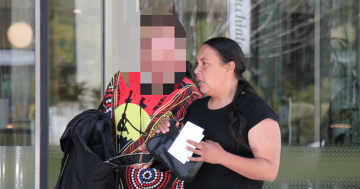
Just when most locals probably thought that there have been more than enough discussions and surveys about the Canberra’s new light rail (or trams), the ACT Government has launched another consultation on the topic.
But wait – do not despair just yet – this time the focus is not about whether or not, or when or how much; all those discussions are now behind us as the government rolls on to the first stages. This time the government wants to open up a new debate about the longer-term decisions on the tram network across the whole of Canberra.
When I first saw the media release and then accessed the online survey and forum page, my first reaction was — well best of luck with that!
I could hear the keyboards being hit by all the usual suspects who have spent the last year or more pounding away and filling column spaces endlessly.
Meanwhile the tram supporters know it is a great initiative but look at these forums and the intensity of the tram opposition with despair.
As I have stated before, I support the introduction of the tram network to Canberra. I support a fully integrated approach to transport including trams, buses, cycling, pedestrians and cars (and maybe even jetpacks!).

The absence of trams in Canberra is a legacy of earlier planners who fell under the spell of cars, roads and Big Petrol. This all started with the NCDC in the ’50s and ’60s and their ambition to build LA style freeways across the capital. Subsequent planning authorities up to the present, remain dominated by road planners who love their roads and cars and put everything else as optional extras. Hence we still have a mish mash of infrastructure for cycling, a dangerous mix of cycling, cars and pedestrians and the present attacks on trees and open spaces in favour of parking.
I look forward to the day when Canberra, as well as having an integrated transport system, has a whole of government and a more healthy culture towards walking and cycling (real leisure cycling – not lycra racing) and the provision of the required infrastructure.
At last with this latest call for feedback we have the beginnings of a plan for a Canberra tram network. This should have been done years ago. But alas – sometimes things happen the wrong way around.
The priority for the network should be to link to the main town centres, Tuggeranong, Woden, and Belconnen, as fast as possible. The link to the airport can wait.

The airport sale was a questionable deal that has left this major asset and all the land around the airport in private hands. If the owners of the airport now wish to have the tram join the airport, then that link should be funded by the major beneficiaries, the owners of the airport site.
A link to the nearest neighbours should be explored though discussions with the NSW Government about establishing a link to downtown Queanbeyan.

The document has placed a priority on having the tram within the Parliamentary triangle. This should not be on the top of the list, if at all. The tram lines to Woden and later to Queanbeyan (Kingston) could provide more than enough linkages to this tourist haven.
Providing locals, especially those in the outer suburbs, with access to the tram must be the top priority.
In amongst the questions being asked are some loaded ones about land development. Obviously these have been embedded into the survey by the LDA/directorate to see if they could glean some form of credibility for selling off more of the cherished green spaces along the future tram corridors.
I would urge people to ignore those options. I suggest over time there will certainly be hoards of new developments along these trams routes. However these decisions should be based on honest and transparent engagements with the residents when the time comes.
The present practice by the LDA/directorate to constantly misuse results from generalised survey questions as a basis for many dubious land sales and developments continues to a major assault on the intelligence and good-will of the Canberra electorate.
The urgent change of culture within the LDA/directorate needs to happen to allow discussions on the trams not to be meshed with the LDA/directorates’ own style of propaganda that endangers the light rail initiative.
In fact I suggest the planning minister needs to take charge of planning and urban development and through real engagement with the electorate deal with the all the complex issues of city building. These debates are currently taking place elsewhere – in Melbourne and overseas – but not here in Canberra. Here it is ‘economic development‘ with everything else a very low priority.
But I digress! So back to trams and the proposed light rail network.
It is a fantastic thing that the government is letting people know that there is long-term general planning – or at least wishful thinking – being considered for a more comprehensive network of trams across Canberra.
I hope people will read the documents online. Curiously their main document is hidden away to the side of the main page under ‘document library’. I suggest it should also be a main link at the top of the page.
I urge people to ignore the wads of propaganda, to seek out the useful information and to participate in the survey to build up the body of opinions about this aspect of Canberra’s future transport options.
As I said earlier, just watch out for the trick questions and tick boxes that could result in responses that will be misused to justify later mass attacks on green spaces.
As for the forum, sadly I expect this will be dominated by the oppositional serial commentators – so I will be ignoring what is going on there.














